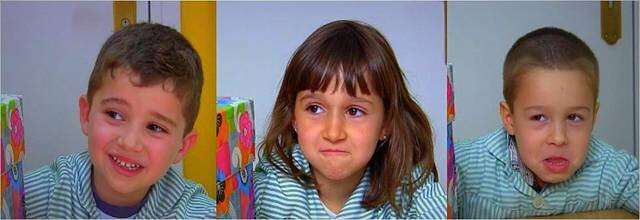How do children express their state of knowledge of the world around them?

When humans communicate, we not only provide information but we also indicate our position in respect of this information, for example, we convey our certainty about the information we share. But little is known about how preschool children do so when signalling the state of certainty or uncertainty of their knowledge.
This was the starting point of a study recently published in Journal of Language, Learning and Development. It is a line of work conducted by Iris Hübscher for her doctoral research under the supervision of Pilar Prieto, coordinator of the Prosodic Studies Group (GrEP) and ICREA researcher at the Department of Translation and Language Sciences (DTCL) at UPF, together with Laura Vincze, a member of the GrEP.
The research sought to investigate in detail how preschool children (aged 3 to 5) signal their own state of knowledge. "We approached the problem by evaluating the potential production of a series of prosodics (accent, tone and intonation) and lexical indices, which are known in adults to express uncertainty," points out Iris Hübscher, first author of the work. In addition, the researchers took into account how children self-assess their state of knowledge.
The study involved 40 preschool children and 10 adults, who acted as the control group. For the experiment, they had to play a guessing game that consisted of saying what they thought was the object within a box from a total of 10 items, five of which were easy because they had seen and touched them before, and another five more difficult ones because they had neither seen nor touched them.
They were then asked to say what they thought was in the box and were next asked to evaluate explicitly what they believed was their state of knowledge of what was inside the box.
The results of the experiment showed that children from 3 to 5 years use multimodal and prosodic markers (accent, tone and intonation) accurately before explicitly reflecting on their own certainty. In venturing to guess, 3-year-old children indicate their uncertainty prosodically and through intonation markers.
In addition, it has been observed that children indicate their degree of uncertainty through the use of different body gestures such as: raised eyebrows, tilting their head and other facial signs, such as frowning and tightening of the lips.
As the researchers explain: "We have seen that at the age of five, children began to use a limited number of lexical markers, which are missing in the younger age group." Markers such as verbs ("I think") or adverbs ("perhaps/maybe") increased in the older age group and in the adult control group.
Thus, the study demonstrates for the first time the wealth of gestural and prosodic markers of children at the age of three that constitute gestural and prosodic precursors to express their degree of knowledge or uncertainty about the world around them.
More information: Iris Hübscher et al, Children's Signaling of Their Uncertain Knowledge State: Prosody, Face, and Body Cues Come First, Language Learning and Development (2019). DOI: 10.1080/15475441.2019.1645669


















